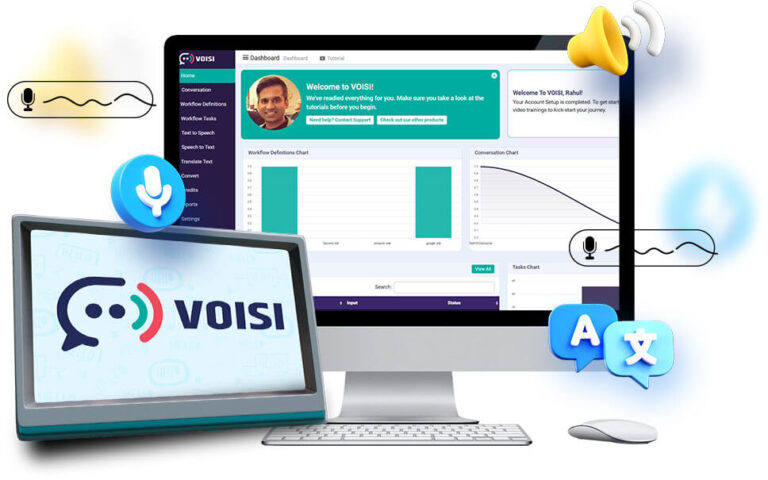How to Create Effective Video Ads
n today’s digital landscape, video advertising has emerged as a powerful tool for brands seeking to capture attention and engage audiences.
With the proliferation of social media platforms and streaming services, the effectiveness of video ads has been amplified, making them an indispensable component of any comprehensive marketing strategy.
However, creating effective video ads that resonate with viewers requires more than just captivating visuals and catchy music; it demands a nuanced understanding of audience preferences, messaging, and platform-specific nuances.
This article will explore the essential elements on How to Create Effective Video Ads that not only attract attention but also drive conversions and brand loyalty.
From defining clear objectives and understanding target demographics to leveraging storytelling techniques and optimizing for various formats, we will provide actionable insights that marketers and business owners can implement.
Whether you are a seasoned professional or new to the realm of video advertising, these guidelines will empower you to design impactful video ads that stand out in a crowded marketplace and foster meaningful connections with your audience.
Join us as we delve into the intricacies of effective video ad creation, equipping you with the knowledge needed to elevate your marketing efforts and achieve your business goals.
Table of Contents How to Create Effective Video Ads
Understand your target audience’s needs
Identifying and comprehending the specific needs of your target audience is crucial for crafting impactful video advertisements.
This process involves thorough research to uncover their preferences, pain points, and motivations.
By analyzing demographic data, consumer behavior, and feedback, marketers can tailor their messaging to resonate deeply with viewers.
This alignment not only enhances engagement but also fosters a sense of connection, making the audience more receptive to the content presented.
Moreover, addressing the unique needs of your audience allows for the creation of content that provides real value, whether through education, entertainment, or problem-solving.
When viewers feel that a video speaks directly to their experiences or addresses their concerns, they are more likely to take action, whether that’s clicking through to learn more or making a purchase.
Ultimately, a well-informed understanding of your audience lays the groundwork for a successful advertising strategy that drives measurable results.
Keep videos short and engaging
Conciseness is a key element in video advertising, as audiences today are inundated with content and have limited attention spans.
Crafting videos that convey the message succinctly can significantly enhance viewer retention and engagement.
By focusing on core messages and eliminating superfluous information, advertisers can create a captivating experience that encourages viewers to stay the course and absorb the intended message.
This efficiency not only respects the viewer’s time but also increases the likelihood of eliciting a positive response.
Engagement can be further amplified through dynamic visuals, compelling narratives, and clear calls to action.
By incorporating elements that pique curiosity and evoke emotions, brands can transform a brief video into a memorable experience that resonates with viewers.
Ultimately, the fusion of brevity and creativity in video content not only captures interest but also drives significant action, making it an essential strategy in effective advertising campaigns.
Use high-quality visuals and audio
The impact of high-quality visuals and audio in video ads cannot be overstated, as these elements play a crucial role in shaping the viewer’s perception and emotional response.
Crisp, vibrant imagery combined with professional-grade sound design significantly enhances the overall production value, allowing the message to stand out in a crowded media landscape.
High-definition visuals draw the audience in, creating a sense of professionalism and credibility that reflects positively on the brand.
Meanwhile, clear audio—free of distractions and background noise—ensures that the message is communicated effectively, allowing viewers to fully engage with the content without frustration.
Furthermore, the synergy between audio and visuals can evoke stronger emotional responses, reinforcing the brand’s narrative and enhancing viewer retention.
Well-executed soundtracks or voiceovers complement striking visuals, creating an immersive experience that captivates audiences and leaves a lasting impression.
By prioritizing both visual and auditory quality, brands can foster a deeper connection with their audience and increase the likelihood of achieving their advertising objectives, ultimately driving higher engagement and conversion rates.
Start with a strong hook
Capturing the viewer’s attention in the first few seconds of a video ad is essential for ensuring message retention and engagement.
A strong hook serves as an irresistible opening that piques curiosity, compelling the audience to stay and learn more about the brand or product being showcased.
Whether through a thought-provoking question, an intriguing statement, or an eye-catching visual, the aim is to create an immediate connection that resonates with the target demographic.
This initial engagement not only encourages viewers to watch the entire ad but also sets the tone for the overall message, establishing a memorable impression that can significantly impact brand perception.
In the realm of video advertising, where competition for attention is fierce, the effectiveness of the hook cannot be underestimated.
A well-crafted opening acts as a gateway to the narrative that follows, seamlessly integrating the overarching theme and inviting viewers to join the brand’s journey.
By prioritizing the development of a compelling hook, advertisers can enhance viewer interest and maintain momentum throughout the ad, ultimately driving higher engagement rates and fostering a deeper connection with the audience.
Clearly convey your brand message
The essence of successful video advertising lies in the ability to articulate a brand’s core message with clarity and precision.
This requires a strategic approach to communication that aligns visuals, tone, and content with the brand’s identity and values.
By ensuring that the message is not only clear but also relatable to the target audience, brands can foster deeper connections and drive engagement.
Elements such as consistent branding, concise language, and compelling storytelling are vital in delivering a coherent message that resonates with viewers, allowing them to understand what sets the brand apart.
Moreover, crafting a clear brand message involves anticipating the audience’s questions and addressing their needs throughout the video.
Using familiar language and relatable scenarios can bridge the gap between the brand and its audience, creating a sense of authenticity and trust.
Whether highlighting unique selling propositions or emphasizing emotional connections, a well-defined message empowers viewers to recognize and remember the brand, ultimately influencing their perception and encouraging loyalty.
Include a compelling call to action
A pivotal element in effective video advertising is the strategic inclusion of a call to action that prompts viewers to take the next step.
This directive should be clear, concise, and seamlessly integrated into the narrative, ensuring it feels like a natural conclusion rather than an abrupt demand.
By utilizing persuasive language and creating a sense of urgency, brands can inspire immediate responses, whether that involves visiting a website, subscribing to a channel, or making a purchase.
Furthermore, visual cues such as on-screen text or graphics can enhance the call to action, providing viewers with a memorable takeaway that reinforces the desired action.
Tailoring this element to align with the overall messaging of the video and the specific preferences of the target audience significantly increases its effectiveness.
Ultimately, a well-crafted call to action transforms passive viewers into active participants, driving measurable results and fostering long-term brand loyalty.
Utilize storytelling to capture attention
Crafting a compelling narrative is essential for engaging viewers and establishing a connection with them.
By weaving relatable characters, emotional arcs, and authentic experiences into video ads, brands can evoke empathy and keep audiences invested from the outset.
The human brain is wired to respond to stories, making it easier for viewers to remember the message and associate it with the brand.
This emotional engagement not only captures attention but also fosters loyalty, as consumers are more likely to support brands that resonate with their values and experiences.
Incorporating storytelling techniques, such as conflict and resolution, allows brands to illustrate their unique value proposition in a memorable way.
A well-told story can simplify complex messages, making them accessible and relatable.
This approach not only enhances viewer retention but also encourages sharing, as people are inclined to pass along content that has emotionally impacted them.
By prioritizing narrative-driven content, brands can differentiate themselves in a crowded marketplace, ultimately driving engagement and conversions through the power of storytelling.
Optimize videos for multiple platforms
Tailoring videos for various platforms is crucial in maximizing reach and engagement.
Each platform has its unique audience and specifications, from video length and format to preferred content styles and interaction methods.
For instance, while quick, attention-grabbing snippets may perform well on social media channels like Instagram and TikTok, more in-depth narratives may resonate better on platforms such as YouTube.
Understanding these nuances enables brands to create content that aligns with user behavior and expectations, ultimately leading to higher engagement rates.
Moreover, optimizing for multiple platforms involves ensuring that videos are not only visually appealing but also technically sound.
This includes using the correct aspect ratios, captions for sound-off viewing, and high-quality visuals that are adaptable to mobile and desktop formats.
By paying attention to these details, brands can enhance user experience and ensure their messages are delivered effectively, regardless of where the audience encounters them.
Such strategic planning not only elevates brand presence but also reinforces messaging consistency across diverse channels, fostering a cohesive identity in the minds of consumers.
Test different ad formats regularly
Consistently experimenting with various ad formats is vital for determining which resonates best with your target audience.
Different formats, such as in-stream ads, bumper ads, and overlay ads, each offer unique benefits and capture attention in distinct ways.
By analyzing the performance metrics associated with each format, brands can identify patterns in viewer behavior, engagement levels, and conversion rates, enabling them to allocate resources more effectively.
Regular testing not only aids in optimizing current campaigns but also fosters innovation by encouraging creative approaches to content presentation.
Furthermore, adapting to changing consumer preferences and technological advancements is essential for sustained success.
As audiences grow increasingly sophisticated, their expectations regarding advertising evolve.
By regularly assessing how different ad formats perform, brands can stay ahead of trends and adjust their strategies accordingly.
This proactive approach ensures that marketing efforts remain relevant and impactful, ultimately driving better results and enhancing overall ROI.
Analyze performance and adjust strategy
tive approach ensures that advertising efforts remain relevant and impactful.
Utilizing analytics tools to track key performance indicators such as click-through rates, engagement duration, and conversion metrics provides invaluable insights into the effectiveness of each campaign.
These data-driven evaluations empower brands to refine their messaging, targeting, and creative elements, resulting in more tailored and resonant video ads.
Moreover, fostering a culture of continuous improvement allows brands to respond swiftly to external factors, such as market shifts or emerging platforms.
By remaining agile and open to adjustments, organizations can better align their advertising strategies with audience expectations and maximize their return on investment.
Ultimately, a commitment to ongoing performance analysis and strategic adaptation not only enhances the effectiveness of video advertising but also strengthens the overall brand presence in a competitive landscape.
In conclusion, creating effective video ads requires a blend of creativity, strategy, and an understanding of your target audience.
By focusing on clear messaging, high-quality production, and engaging storytelling, brands can capture attention and drive conversions.
Remember to leverage analytics to measure performance and refine your approach over time.
As the digital landscape continues to evolve, staying adaptable and innovative in your video advertising efforts will be key to standing out amidst the competition and achieving your marketing goals.








